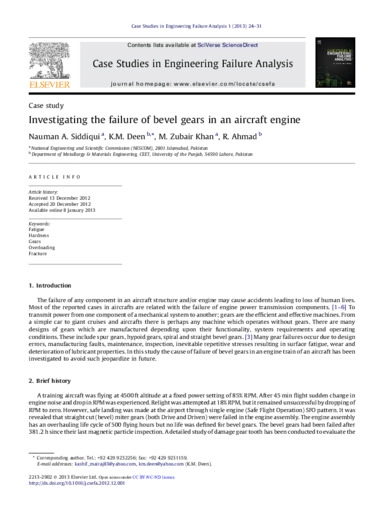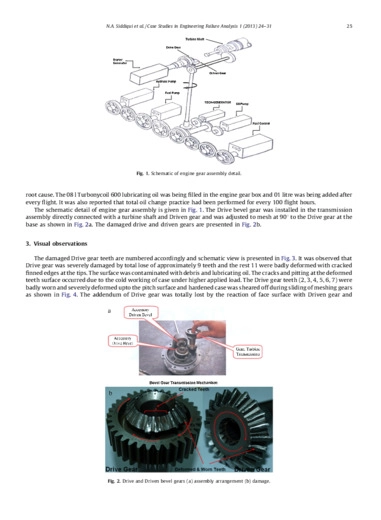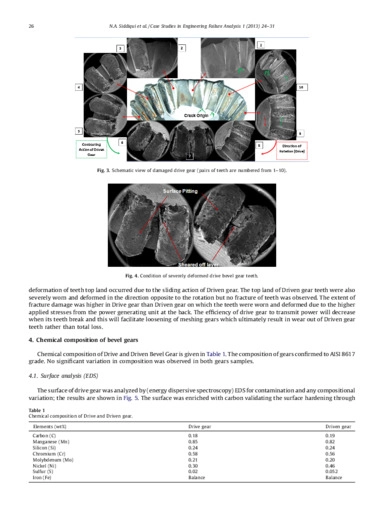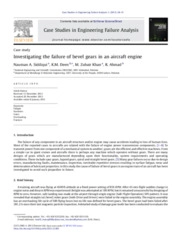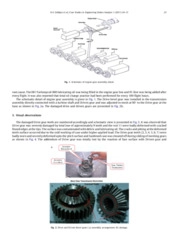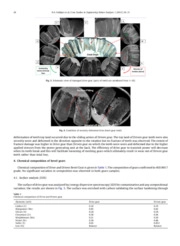Investigating the failure of bevel gears in an aircraft engine
(in lingua inglese)
The microstructural details revealed transformation of retained austenite into un-tempered martensite under higher internal shear stress.
The existence of internal stresses was validated by the DEA in the case.
Subsurface cracks developed within the altered orientation of laths in the tempered martensite by these stresses.
The variation in loading during rolling/sliding concentrated higher shear stress at the crack front and non-uniform fatigue striations were produced in the crack propagation region followed by overloading.
The mode of failure was contact fatigue due to microstructural variations in the gear material.
The continuous rolling action of gears resulted in tooth bending which produced crack at the fillet root and followed the path towards zero stress point.
Settori:
Parole chiave: ,






